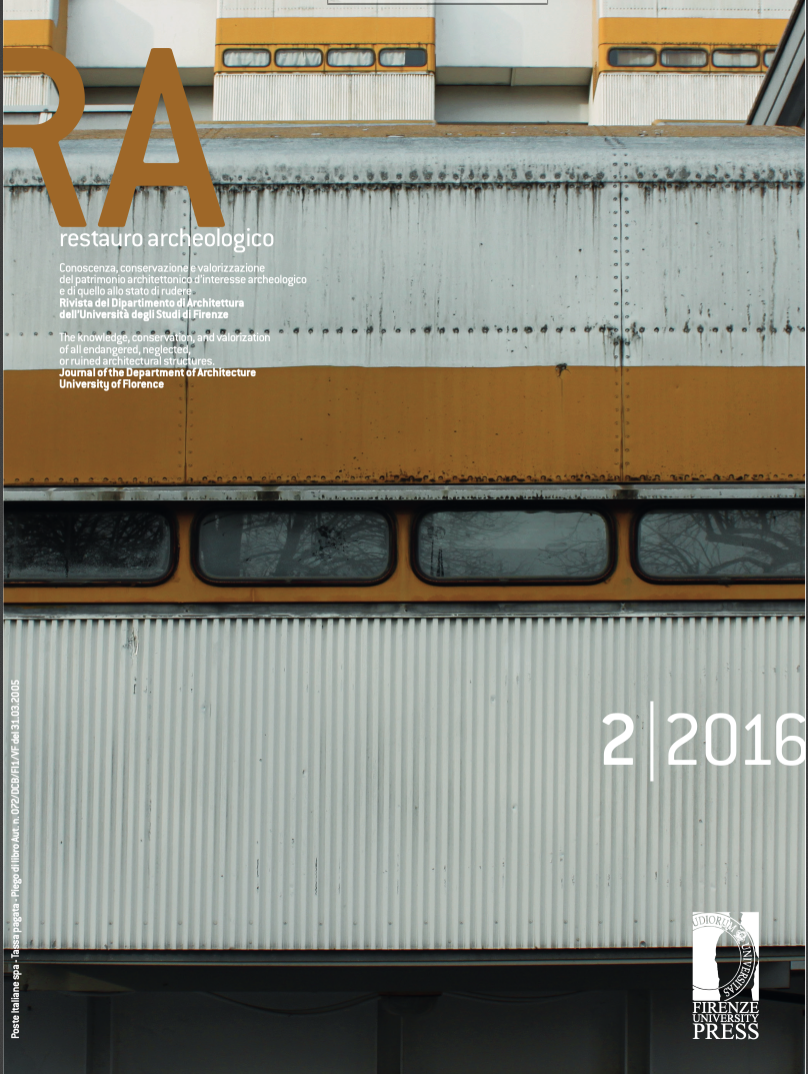Published 2016-12-01
Keywords
- TiO2,
- biofouling,
- Cultural Heritage,
- stone
How to Cite
Abstract
Archaeological artifacts are inevitably subject to deterioration caused by natural air pollution, contaminants by human actions, and biodeterioration from microorganisms. Their preservation is considered a more and more strategic factor in many countries because of their economic, social and cultural implications. Modern techniques of interventions often require re-application after some years, and they cannot be used in all restorations. Recently, the use of nanotechnologies was transferred to the restoration sector bringing many innovations. Titanium dioxide (TiO2) is the main nanostructured material used to prevent the comparison of weathering traces, to obtain self-cleaning materials and to slow down biofouling as well. In this paper, its potential use was tested on common archaeological materials like sandstone, limestone and bricks. The self-cleaning ability of this innovative material, as well as, its biofouling prevention were evaluated in laboratory simulated tests. Results show the high potentiality of this nanomaterial in making the tested archaeological surfaces self-cleaning and biocide.


